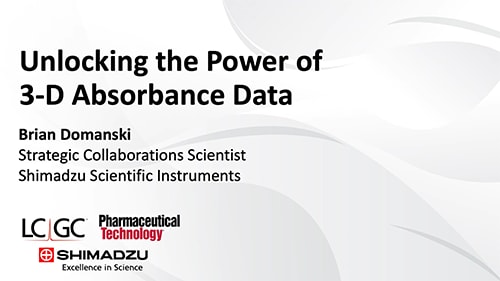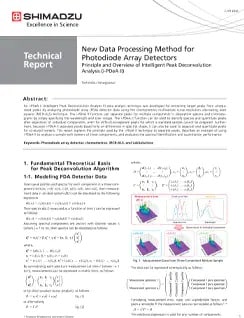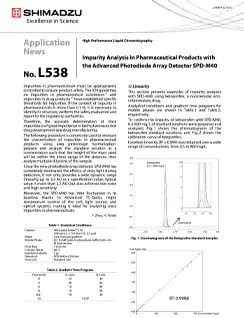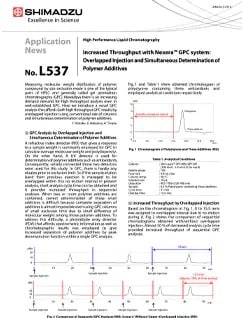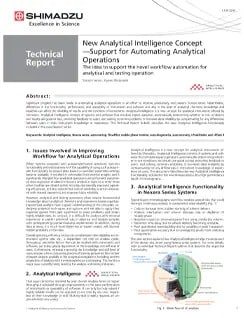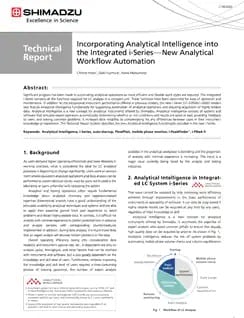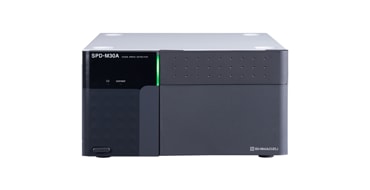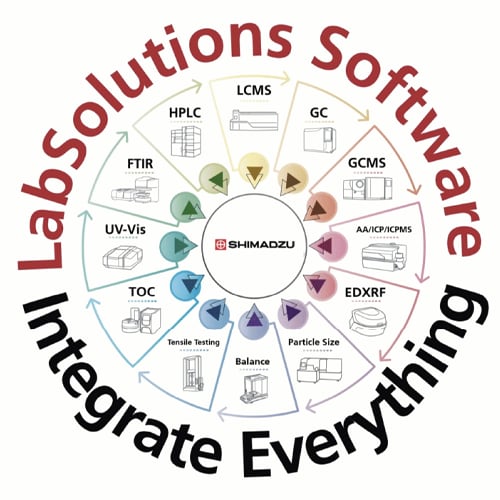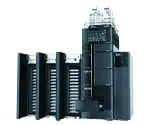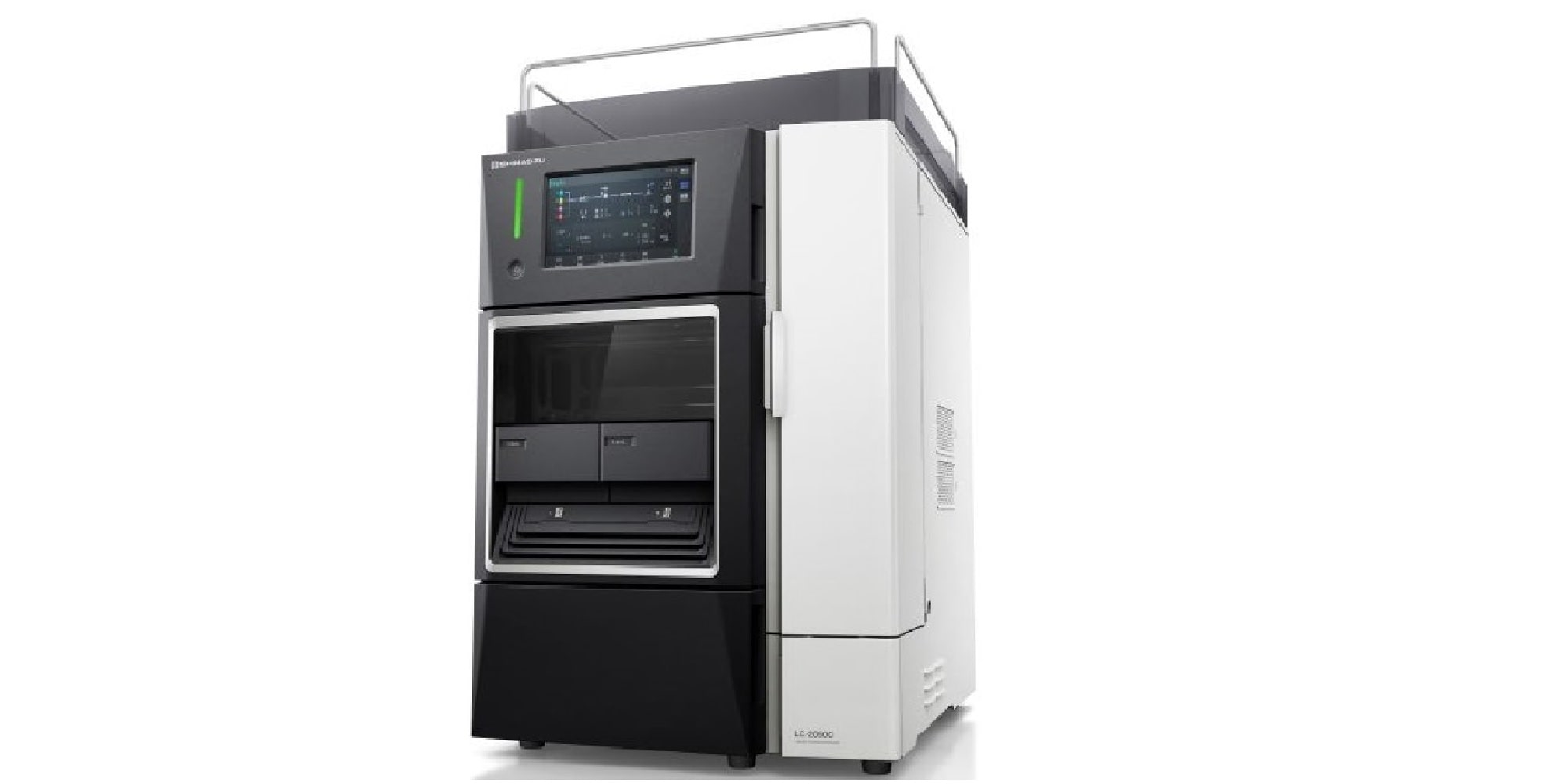Request More Information
Peak Purity / Deconvolution
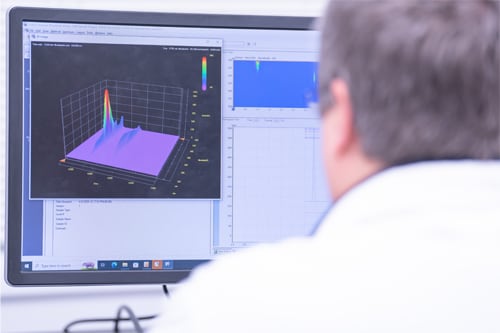
To get the most from your photo diode array data, using all three dimensions of data is key. Spectral information can allow confident identification of peaks from your library or alert you to potential coelution of impurities or related substances. Traditional Peak Purity algorithms, based on cosine vector comparison of spectra at select points across the peak, are one way to assess potential coelution. This approach can confirm the presence of a coeluting peak but is unable to assist with characterizing or quantifying such a peak.
i-PDeA II (Intelligent Peak Deconvolution Analysis II) data analysis was developed by Shimadzu to analyze photodiode array (PDA) detector data using multivariate curve resolution alternating least squares (MCR-ALS) techniques. The i-PDeA II function can deconvolve multi-component peaks by simply specifying wavelength and time ranges, providing both absorbance versus time and spectrum data for each feature identified from the raw data. i-PDeA II-generated spectra and peaks can be handled with the same tools in LabSolutions to allow comparison of spectral similarity and quantification of 2D data. The power of MCR-ALS deconvolution uses both peak fitting and spectrum fitting within its optimization, even isomers that are unresolved can be separated and quantified with accuracy that rivals full separation.
Find out how Shimadzu can help you get the most from your PDA data, whether your challenge is spotting coelution early in drug development, developing stability assays for tricky related compounds, or ensuring final product purity. With built-in tools like Peak Purity and Similarity, Spectral Library comparison, and i-PDeA II MCR-ALS deconvolution, LabSolutions brings the benefits of 3D data to your lab.
Podcast - Unlocking the Power of 3-D Absorbance Data
This podcast will examine peak deconvolution with photodiode array detectors and how a unique software function can separate peaks that are not resolved on-column, yielding better detection results and minimizing method development and analysis time. The podcast will explore the development of this tool with a leading pharmaceutical company and provide examples of how it can have an impact across a wide range of disciplines in the pharma/biopharma arena, from development to production.
Featured Applications
New Data Processing Method for Photodiode Array Detectors
An i-PDeA II (Intelligent Peak Deconvolution Analysis II) data analysis technique was developed for extracting target peaks from unseparated peaks by analyzing photodiode array (PDA) detector data using the chemometrics multivariate curve resolution alternating least squares (MCR-ALS) technique. The i-PDeA II function can separate peaks for multiple components in absorption spectra and chromatograms by simply specifying the wavelength and time ranges. The i-PDeA II function can be used to identify spectra and quantitate peaks after separation of individual components, even for difficult-to-separate peaks for which a standard sample cannot be prepared. Furthermore, because i-PDeA II separates peaks based only on differences in spectral shape, it can also be used to separate and quantitate peaks for co-eluted isomers. This report explains the principle used by the i-PDeA II technique to separate peaks, describes an example of using i-PDeA II to analyze a sample with isomers of three components, and evaluates the spectral identification and quantitation performance.
Impurity Analysis in Pharmaceutical Products with the Advanced Photodiode Array Detector SPD-M40
The following procedure is commonly used to measure the concentration of impurities in pharmaceutical products using area percentage normalization: prepare and analyze the standard solution at a concentration such that the height of the main peak will be within the linear range of the detector, then analyze multiple dilutions of the sample. Since the new photodiode array detector SPD-M40 has completely eliminated the effects of stray light during detection, it not only provides a wide dynamic range (linearity up to 2.5 AU as a specification value, typical value is more than 2.5 AU) but also achieves low noise and high sensitivity.
Increased Throughput with Nexera™ GPC system: Overlapped Injection and Simultaneous Determination of Polymer Additives
Measuring molecular weight distribution of polymer compounds by size exclusion mode is one of the typical parts of HPLC and generally called gel permeation chromatography (GPC). Nowadays there is an increasing demand demand for high throughput analysis even in well-established GPC. Here we introduce a novel GPC analysis that affords both high throughput GPC results by overlapped injection using conventional size of columns and simultaneous determination of polymer additives.
New Analytical Intelligence Concept - Support for Automating Analytical Operations
Significant progress has been made in automating analytical operations in an effort to improve productivity and prevent human errors. Nevertheless, differences in the functionality, performance, and operability of instruments and software and also in the level of analytical chemistry knowledge and expertise can affect the reliability of results and the condition of instruments. Analytical Intelligence is a new concept for analytical instruments offered by Shimadzu. Analytical Intelligence consists of systems and software that simulate expert operators automatically determining whether or not conditions and results are good or bad, providing feedback to users, and solving common problems. It increases data reliability by compensating for any differences between users in their instrument knowledge or experience. This Technical Report bulletin describes the new Analytical Intelligence functionality included in the new Nexera™ series.
Incorporating Analytical Intelligence into the Integrated i-Series - New Analytical Workflow Automation
Significant progress has been made in automating analytical operations as more efficient and flexible work styles are required. The integrated i-Series contains all the functions required for LC analysis in a compact unit. These functions have been optimized for ease of operation and maintenance. In addition to the exceptional instrument performance offered in previous models, the new i-Series (LC-2050/LC-2060) models also feature Analytical Intelligence functionality for supporting automation of analytical operations and ensuring acquisition of highly reliable data. Analytical Intelligence is a new concept for analytical instruments offered by Shimadzu. Analytical Intelligence consists of systems and software that simulate expert operators automatically determining whether or not conditions and results are good or bad, providing feedback to users, and solving common problems. It increases data reliability by compensating for any differences between users in their instrument knowledge or experience. This Technical Report bulletin describes the new Analytical Intelligence functionality included in the new i-Series.
News / Events
-
AAPS Pharm Sci 360 2025
November 9-12
Henry B. Gonzalez Convention Center
San Antonio, TX -
Pharma Community Network Event
Shimadzu Scientific Instruments and ZefSci invite you and your analytical teams to a pharma community networking event to celebrate 150 years of science and innovation at The Foundry & Lux in South San Francisco. Our event will be built around innovation, collaboration, and connection.
-
ASMS (American Society for Mass Spectrometry) 2025
June 1-5
Baltimore Convention Center
Baltimore, MD -
Shimadzu Scientific Instruments Opens Boston Location of Its R&D Center Focus will be on promoting customer-oriented development to expand business in the pharmaceutical field
Shimadzu Scientific Instruments, Inc. (SSI, Columbia, Maryland, USA), a Shimadzu Group company, has opened a satellite lab in Boston, Massachusetts to be the base of its collaborative research and development activities on the East Coast. Established to conduct research and development more closely linked to customers, SSI's R&D Center consists of three bases, with the main facilities at its Maryland headquarters, a West Coast location, and this new space in Boston near the city center. The Boston lab was set up by partnering with Labshares, a shared laboratory service provider for life science companies.



